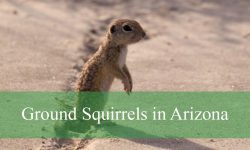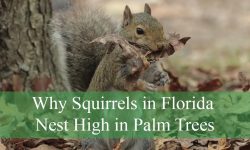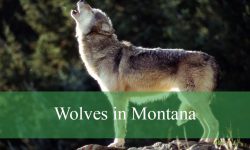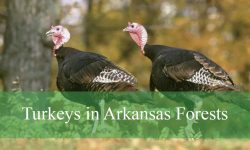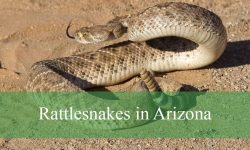Minnesota’s forests come alive in autumn—not just with the colors of turning leaves, but with the frantic activity of red squirrels. These small, fiery-furred rodents are among the most industrious animals in the North Woods. As temperatures drop and the first frosts appear, red squirrels begin one of nature’s most impressive survival projects: storing food for winter.
In a land where winters can last half the year and snow can pile several feet deep, this strategy isn’t just clever—it’s essential. But how do red squirrels know what to store, where to put it, and how to find it again months later? In this detailed article, we’ll uncover the secrets behind how Minnesota’s red squirrels prepare for winter, their remarkable memory and storage techniques, and how climate change is reshaping this timeless behavior.
Meet the Red Squirrel of Minnesota
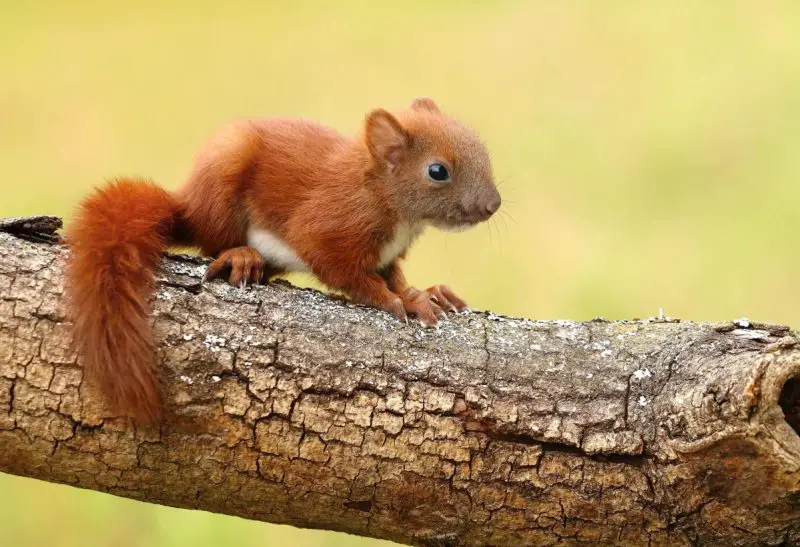
Species Overview
The American red squirrel (Tamiasciurus hudsonicus) is one of the most common small mammals in Minnesota’s coniferous forests. Easily recognizable by its reddish fur, white belly, and chattering calls, the red squirrel is smaller than the gray squirrel but much more territorial and vocal. Adult red squirrels typically weigh between 6 and 9 ounces and measure around 12 to 14 inches long, including the tail.
These squirrels thrive in northern forests, especially where pine, spruce, and fir trees dominate—the very landscapes that define northern Minnesota and the Boundary Waters region. They are year-round residents, remaining active through even the harshest winters.
Behavior and Personality
Unlike gray squirrels, which are often seen foraging in open parks, red squirrels are fiercely solitary. Each individual defends a specific territory that contains its food stores, nesting sites, and key trees. Trespassing by other squirrels is met with loud scolding calls and even physical chases. Their energetic behavior and constant chatter have earned them nicknames like “pine squirrels” and “chickarees.”
These characteristics make them one of the most fascinating mammals to observe during Minnesota’s fall season—busy, vocal, and endlessly strategic.
Why Food Storage Is Essential in Minnesota
Harsh Winters Demand Preparation
Minnesota’s winters are long, cold, and snowy. From November to March, temperatures can drop well below zero, and snow cover can last for months. In such conditions, food becomes scarce, and survival depends on advance preparation.
Red squirrels cannot hibernate like some mammals. Instead, they remain awake and active, requiring a steady supply of food throughout the winter. Their solution? A meticulous system of gathering, storing, and defending food caches that can sustain them until spring.
A Seasonal Race Against Time
As summer wanes, red squirrels enter what’s called the “caching season.” During late August and September, they spend most of their waking hours collecting cones, nuts, fungi, seeds, and other food items. Their behavior intensifies as days shorten and temperatures fall, reflecting an instinctive urgency driven by survival.
It’s a race against nature’s clock—every cone and acorn gathered now could mean the difference between life and death in February.
The Art of Storing Food
Central vs. Scatter Hoarding
Red squirrels use a technique known as central hoarding, also called “midden building.” Instead of burying food in many small spots like gray squirrels, they create one or more large, central storage piles known as middens. These middens can be enormous—sometimes several feet wide and deep—and contain tens of thousands of pine or spruce cones.
Each midden is typically located near a favorite tree or den and serves as both a food pantry and a territorial marker. Red squirrels may defend their middens year-round, chasing off intruders and patrolling their boundaries daily.
The Midden: Nature’s Pantry
A midden isn’t just a random pile of cones. It’s a carefully organized system. Red squirrels remove the scales from cones to reach the seeds inside, leaving behind layers of cone debris that gradually accumulate into mounds over years. The midden’s structure helps insulate stored cones from moisture and decay, preserving them even through deep snow.
Older middens can be inherited by future generations of squirrels, making them valuable real estate in the squirrel world. Researchers have found ancient middens used by multiple generations—living evidence of how these tiny mammals engineer their environment.
Choosing the Right Food
Red squirrels are selective foragers. Their favorite foods in Minnesota include:
- Pine and spruce cones (especially white spruce and red pine)
- Maple and birch seeds
- Mushrooms and fungi, often stored on branches to dry
- Acorns and hazelnuts when available
- Bark and buds in emergencies
Each food type serves a seasonal purpose. Cones and nuts provide fat and protein during midwinter, while fungi and seeds offer variety when other supplies run low.
How Red Squirrels Remember Their Food Caches
Spatial Memory and Landmarks
Red squirrels rely on exceptional spatial memory to locate their food stores months later. They remember visual landmarks like tree shapes, logs, and rocks. This ability is honed through daily practice—during autumn, squirrels repeatedly visit their storage sites, reinforcing the memory of each location.
Unlike scatter-hoarding species, which must recall hundreds of hiding spots, red squirrels’ reliance on a few key middens simplifies their retrieval process. However, they still need to navigate through thick snow and shifting forest conditions, which makes their memory all the more impressive.
The Role of Smell
While memory is important, scent detection plays a role too. Red squirrels can use their keen sense of smell to locate buried cones or hidden nuts under snow. This dual strategy—combining memory and scent—ensures that even under deep snowpack, they can dig directly into their stores with precision.
The Seasonal Rhythm of Food Storage
Late Summer: The Gathering Begins
By late August, the first cool nights trigger a behavioral shift. Red squirrels begin stripping cones from trees at an astonishing rate. They may spend up to 12 hours a day collecting and transporting food to their middens, sometimes carrying cones longer than their own bodies.
They harvest not only ripe cones but also green ones that haven’t opened yet—because these will stay closed and fresh until winter, preventing the seeds from drying out.
Autumn: Peak Hoarding Season
September and October are peak caching months. Middens grow rapidly, sometimes with thousands of new cones added daily. During this time, squirrels rarely rest, often seen darting through the trees or across the forest floor carrying cones in their mouths.
They also store mushrooms by impaling them on branches to dry, later retrieving them when other food runs short. This behavior adds variety to their winter diet and prevents spoilage.
Winter: Living Off the Cache
Once snow blankets the forest, red squirrels spend most of their time near their midden. They tunnel under the snow to access stored food, carrying cones back to feeding spots or tree bases to strip the seeds. Their tunnels, insulated by snow, help conserve body heat while allowing them to move unseen by predators.
Even in the coldest months, red squirrels maintain their territories and continue their daily routines of feeding and guarding.
Spring: The Leftovers and New Life
As winter fades, red squirrels often find that not all their caches are used. These leftovers become valuable food reserves during early spring, when new seeds are still scarce. Sometimes, the remaining cones even germinate, contributing to forest regeneration—a beautiful example of how animal behavior supports ecosystem health.
Competition and Theft: The Squirrel’s Constant Battle
Rival Squirrels
Food storage would be easy if other squirrels respected boundaries—but they don’t. Red squirrels constantly face competition from their own kind. Intruders will steal cones, raid middens, or even take over prime territories. That’s why red squirrels are so defensive, using loud chatter, tail flicks, and chases to protect their stores.
Other Animals
Red squirrels also face theft from other species, including chipmunks, mice, and even birds like jays and woodpeckers. Predators such as martens and hawks pose an additional danger while they’re out foraging. Their defensive strategies—fast reflexes, vocal warnings, and strategic hiding—are crucial for survival.
The Impact of Climate Change on Food Storage
Shifting Seasons and Food Availability
Recent studies in the Great Lakes region, including Minnesota, show that climate change is altering cone production cycles in conifer forests. Warmer temperatures can disrupt the timing of seed ripening, making it harder for red squirrels to predict when to harvest.
Additionally, inconsistent snow cover affects how well middens stay insulated. Shallow snowpack can expose food stores to freezing and thawing cycles, increasing spoilage.
Behavioral Adaptations
In response, red squirrels are showing signs of behavioral flexibility. Some have been observed expanding their diets to include more hardwood seeds and even birdseed from human feeders. Others adjust the timing of caching activity, starting earlier or hoarding different materials depending on forest conditions.
Long-Term Consequences
If these climate trends continue, Minnesota’s red squirrels may face increasing challenges. Their success depends heavily on predictable seasons and reliable food sources. Scientists are closely monitoring how these changes will affect population stability and forest dynamics in the coming decades.
Ecological Importance of Red Squirrel Caching
Forest Regeneration
Red squirrels unknowingly act as forest gardeners. Cones left buried or forgotten can germinate into new trees, helping maintain forest diversity. Their middens create nutrient-rich microhabitats that support fungi, insects, and soil microbes.
Food Source for Other Species
Middens and leftover caches also benefit other animals. When squirrels abandon a midden, chipmunks, deer mice, and birds often take advantage of the stored food. Even martens and foxes explore old middens for prey.
Indicator Species
Because they rely on healthy conifer forests, red squirrels serve as an indicator species—their presence and behavior help scientists assess forest health and ecosystem balance in Minnesota’s northwoods.
Observing Red Squirrels in Minnesota
Best Time and Places to Watch
Autumn is the perfect time to observe red squirrels in action. Parks such as Itasca State Park, Voyageurs National Park, and the Superior National Forest offer excellent opportunities. Early mornings are particularly active as squirrels dash between trees, carrying cones and chattering loudly.
Signs of Activity
Look for middens—mounds of cone scales, twigs, and debris at the base of conifer trees. You may also spot freshly stripped cones or hear the sharp calls of a squirrel defending its stash. Patience and quiet observation often reward you with glimpses of their industrious work.
Quick Facts About Red Squirrels
- Scientific name: Tamiasciurus hudsonicus
- Habitat: Boreal and mixed forests across northern North America
- Diet: Seeds, cones, fungi, buds, berries, and nuts
- Storage method: Central hoarding in large middens
- Activity: Diurnal (active during the day)
- Lifespan: 4–7 years in the wild
- Predators: Hawks, owls, martens, foxes, snakes
- Behavior: Territorial, vocal, and energetic year-round
FAQs About Red Squirrels in Minnesota
How do red squirrels find their food under the snow?
They use both memory and smell. Red squirrels remember the exact location of their middens and use scent detection to pinpoint caches buried under several inches of snow.
How many cones does a red squirrel store for winter?
A single squirrel may collect up to 10,000 cones in one season, depending on cone availability and territory size. Some large middens can contain food stores lasting multiple winters.
Do red squirrels share their food?
No. Red squirrels are solitary and extremely territorial. They do not share caches and will defend their middens aggressively from other squirrels or animals.
What happens if a squirrel loses its cache?
If a squirrel loses its midden to theft or predation, survival chances decrease dramatically. Some may try to raid others’ middens or rely on emergency foods like buds and bark.
Do red squirrels hibernate?
No. They remain active all winter, feeding daily on their stored food. Their thick fur and snow tunnels help them stay warm even in subzero temperatures.
How do climate changes affect their caching habits?
Warmer winters and unpredictable cone crops make caching more challenging. Squirrels may alter timing, use alternative foods, or expand their range in response.
Can red squirrels remember old middens from previous years?
Yes. Many squirrels reuse or inherit old middens, sometimes adding fresh cones on top of older debris layers that have built up over generations.
Are red squirrels beneficial to forests?
Absolutely. By forgetting or abandoning some of their stored cones, red squirrels help replant trees, aiding natural forest regeneration.
Do red squirrels eat mushrooms?
Yes. They collect fungi, dry them on branches, and store them for winter—a rare behavior among rodents that shows remarkable foresight.
Are red squirrels endangered in Minnesota?
No. They are abundant and widespread across the state, although local populations fluctuate depending on cone crops and predator levels.
Final Thoughts
The red squirrel’s winter strategy is one of the most remarkable survival stories in the northern forest. Through hard work, instinct, and memory, these tiny creatures endure months of freezing temperatures and snow. Every cone collected, every tunnel dug, and every midden defended is a testament to their resilience.
In Minnesota, red squirrels aren’t just another woodland animal—they’re vital players in the forest ecosystem. They shape the woods through their caching, influence plant growth, and provide food for countless other species. Watching one hustle through the autumn trees, cheeks full and tail twitching, offers a glimpse of nature’s perfect preparation.
As the snow falls over Minnesota’s pine forests, the red squirrel sleeps lightly in its nest, safe above a mountain of stored treasure—an ingenious little survivor in the heart of winter’s wilderness.

